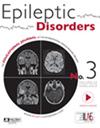In this study, characteristics of signal profiles formed by motion, oscillation, and sound signals were analyzed to evaluate generalizability and variability in a single patient setting (intra-patient variability) and between patients (inter-patient variability). As a secondary objective, the effect of brivaracetam intervention on signal profiles was explored.
Patient data included 13 hyperkinetic seizures, 65 tonic seizures, 13 tonic–clonic seizures, and 138 motor seizures from 11 patients. All patients underwent an 8-week monitoring, and after a 3-week baseline, brivaracetam was initiated. Motion, oscillation, and sound features extracted from the video were used to form signal profiles. Variance of signals was calculated, and combined median and quartile visualizations were used to visualize the results. Similarly, the effect of intervention was visualized.
Hyperkinetic motion signals showed a rapid increase in motion and sound signals without oscillations and achieved low intra-patient variance. Tonic component created a recognizable peak in motion signal typical for tonic and tonic–clonic seizures. For tonic seizures, inter-patient variance was low. Motor signal profiles were varying, and they did not form a generalizable signal profile. Visually recognizable changes were observed in the signal profiles of two patients.
Video-based motion signal analysis enabled the extraction of motion features characteristic for different motor seizure types which might be useful in further development of this system. Tonic component formed a recognizable seizure signature in the motion signal. Hyperkinetic and motor seizures may have not only significantly different motion signal amplitude but also overlapping signal profile characteristics which might hamper their automatic differentiation. Motion signals might be useful in the assessment of movement intensity changes to evaluate the treatment effect. Further research is needed to test generalizability and to increase reliability of the results.



